Globally, there are over one billion people with disabilities, and, whatever their affliction, their dreams and ambitions, as well as their objectives, remain vivid. However, these are often overshadowed by various challenges, and insufficient efforts to ensure their full inclusion in different areas of life. On December 3, the world marks the International Day of Persons with Disabilities as a sign of solidarity. The potential of these people is limitless, but what about their opportunities? Take a moment to reflect on that while reading some expert opinions below.
Key Takeaways:
- The International Day of Persons with Disabilities (IDPD) is celebrated every year on December 3rd.
- About 16% of the population have at least one disability, and only around 22% of those people are employed.
- A lack of accurate data, stigmatization, insufficient intersectionality, and the absence of relevant policies hinder the integration of persons with disabilities in development programs.
- According to experts, key gaps in terms of persons with disabilities include access to education, healthcare, and employment.
- The inclusion of persons with disabilities in international development efforts is essential for social justice, economic growth, social cohesion, innovation and many other reasons.
DevelopmentAid: Why is it essential to prioritize the inclusion of persons with disabilities in international development efforts?
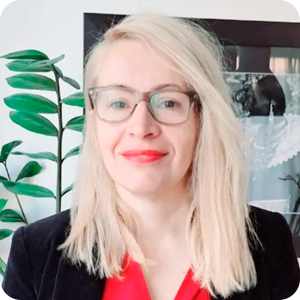
“Inclusion of persons with disabilities is often seen as requiring additional effort, but this perspective overlooks their role in creating truly comprehensive development. Persons with disabilities are part of every community, and excluding them diminishes the overall impact of any initiative. Prioritizing inclusion means recognizing that this category is a vital contributor to progress, not an afterthought. This approach ensures that development efforts are fair, effective, and lasting for everyone involved. By embedding inclusion from the outset, development not only creates opportunities for equal participation but also strengthens collaboration among all actors, reinforcing shared responsibility. Ultimately, the inclusion of persons with disabilities strengthens societal resilience, advances human rights, and ensures that no one is left behind. Prioritizing their involvement isn’t just about meeting needs – it’s about empowering diverse groups to contribute to, and benefit from, global progress.“
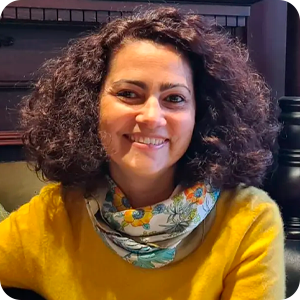
“There should be no worries or stereotypes in terms of including persons with disabilities in employment. Inclusive management must be actively learned and practiced, ensuring teams, beneficiaries, and partners thrive in diverse environments. Globally, we cannot ignore one billion people with disabilities. International development efforts are crucial in supporting national efforts, often catalyzing local change. For example, during previous work in Kenya, we organized workshops to promote the Global Disability Summit (GDS) commitments. This ultimately prompted a multi-stakeholder consultation led by the Kenyan government to mobilize key disability-inclusive actors.”
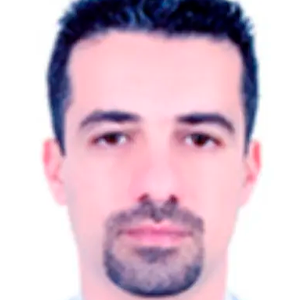
“The inclusion of persons with disabilities in international development efforts is essential, especially for a developing country, for several reasons:
- Social justice: This ensures that all citizens, including those with disabilities, benefit equitably from the country’s development.
- Economic growth: Inclusion allows for the leveraging the skills and potential of all citizens. In Morocco, where the employment rate for persons with disabilities is only 13.6%, improved inclusion could stimulate productivity and economic growth.
- Social cohesion: Inclusive policies strengthen solidarity and reduce inequalities, contributing to a more stable and united society.
- Innovation: The diversity of perspectives, including those of persons with disabilities, can lead to more innovative solutions for development challenges.”
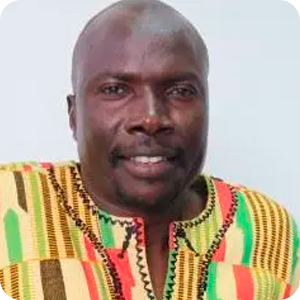
“The inclusion of persons with disabilities in international development isn’t just beneficial; it’s foundational. From my experience, when we reduce barriers, we unlock potential that strengthens communities in profound ways. Inclusive policies ensure that every individual’s talents contribute to economic growth, resilience, and social cohesion. Building inclusive societies isn’t just the right thing; it’s the smart path toward sustainable development.”

“Prioritizing inclusion in international development efforts is essential because it leads to more equitable and sustainable outcomes for society as a whole. Inclusive policies benefit not just persons with disabilities, but everyone by promoting economic growth, social cohesion, and overall well-being. By embracing diversity and ensuring equal access to opportunities, inclusive approaches can drive innovation, increase productivity, and unlock untapped human potential. Research indicates that closing economic gender gaps alone could yield a “gender dividend” of $172 trillion for the global economy. Similarly, disability inclusion represents a $13 trillion market opportunity. Inclusive societies foster stronger communities, reduce inequality, and create environments where all individuals can contribute their unique skills and perspectives. Ultimately, prioritizing inclusion in development efforts leads to more robust, resilient, and prosperous societies that benefit all members, not just specific groups.”
DevelopmentAid: What are the most significant challenges faced in implementing inclusive development programs for persons with disabilities, especially in low- and middle-income countries, and how can these be addressed?

“A major challenge in running programs for people with disabilities is the lack of accurate data, making these people invisible in development planning and preventing programs from addressing their specific requirements. In low- and middle-income countries, societal stigmas remain deeply ingrained, and governments often lack the capacity to enforce public policies that support inclusion. Additionally, technical capacity in implementing inclusive development programs remains weak, with many organizations unsure how to integrate accessibility standards and inclusive practices effectively. Adequate funding is another key challenge – not only in terms of quantity but also ensuring that available funds address inclusion properly. This often complicates balancing mainstream and disability-specific approaches (twin-track strategies). It is essential to empower persons with disabilities and partner with the organizations of persons with disabilities (OPDs) that offer practical solutions and model inclusive practices for sustainable development.”

“Implementing disability-inclusive development programs faces two primary challenges. Firstly, mainstreaming the perspectives of persons with disabilities across general development programs often lacks intersectionality, failing to incorporate identities such as gender, age, or culture. For instance, development bank-funded infrastructure renovations in Latin America occurred without making these accessible, dismissing the requirements of persons with disabilities as “too costly” – negligence that had to be corrected later at great expense. The second challenge involves designing development programs that prioritize the active and full participation of persons with disabilities in society beyond the –conventional – narrow focus on health or institutionalization. Too often, persons with disabilities are viewed only through a beneficiary lens rather than as contributors to society. A critical issue is the systemic discrimination that this category faces in accessing quality, inclusive education. Enrollment alone does not guarantee learning. Many students, such as blind pupils, those who are hard of hearing, or students with cerebral palsy, lack accessible materials; deaf students miss professors or interpreters who can speak sign language, and I am not even talking about autistic, deafblind students or those with intellectual disabilities, among others. Without equitable education and exposure to internships or fellowships, persons with disabilities face unrealistic expectations in the workforce, akin to entering a bike race without knowing how to pedal. The solutions, however, are straightforward. Professionals in international development must have expertise in Diversity, Equity, Inclusion and Belonging (DEIB). Yet, many currently lack practical experience in inclusion, learning only ‘on the job’. Successful inclusion requires deliberate recruitment, collaboration with representative organizations, ongoing consultations, and continuous dialogue. These steps are essential to creating equitable, inclusive environments for persons with disabilities in all areas of development.”
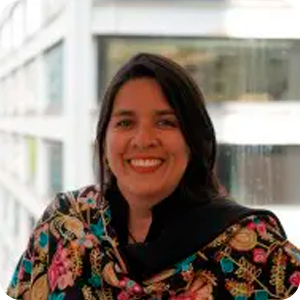
“The first challenge is limited awareness and persistent stigma. Stigmatizing attitudes limit persons with disabilities’ participation as well as access to services: neighbors may blame the mother of a child with a disability or even attribute the disability to a curse. To combat stigma, promote inclusion, and drive supportive policies, we need awareness campaigns and education. Where policies mandate services to people with disabilities, provider attitudes may improve. When architects understand their needs and accessibility, inclusive designs become possible. And awareness can spark healthcare professionals to advocate for accessible working environments. Inadequate policy implementation is a challenge. Some nations’ policies do support persons with disabilities’ rights, yet between policy and practice looms a vast gap (e.g., even when policies mandate enrollment for children with disabilities, schools often baulk, arguing lack of infrastructure or trained staff). The crucial strengthening of policy enforcement and the implementation of inclusive laws requires government commitment, local authority capacity building, and consistent monitoring. Otherwise, PWD will continue to face barriers, limiting their economic independence and social integration.”
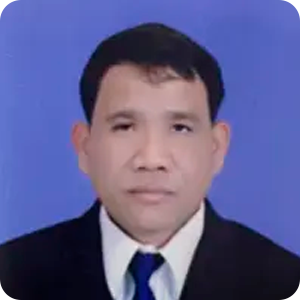
“Persons with disabilities encounter unique barriers, especially in accessing education, healthcare, and employment, and discrimination hampers their ability to participate fully in societal life. The twin-track method promotes inclusive policy and takes action based on the four strategies:
- Rights-based programming: Aimed at the sustainability of poverty alleviation for persons with disabilities, emphasizing their participation. Discrimination against persons with disabilities is identified and addressed in the fields of education, healthcare, and the impact on livelihoods.
- Civic engagement: Builds on and strengthens existing OPDs and/or other civil society organizations and structures.
- Partnership and cooperation: Involves young persons with disabilities and their organizations working with national and local authorities, focusing on disability-inclusive development.
- Education as a basis for social change: Education is the basis for sustainable poverty alleviation, and schools are centers for social change and innovation.
The four main strategies are designed to learn from each other’s experiences and programming in low- and middle-income countries in a structured way for disability-inclusive policy.”

“The primary challenges in implementing inclusive development programs in developing countries include:
- Lack of resources: As a middle-income country, resources remain limited for financing comprehensive inclusive programs.
- Social stigmatization: Negative attitudes towards disability persist in certain parts of society, hindering inclusion.
- Inadequate infrastructure: Numerous buildings and public spaces are not accessible to persons with disabilities.
- Lack of data: There is a shortage of accurate data on persons with disabilities, which complicates program planning and evaluation.
To address these challenges, one could:
- Allocate more resources to inclusion programs
- Conduct awareness campaigns to change social attitudes
- Invest in improving infrastructure accessibility
- Enhance data collection on disability.”

“In low- and middle-income countries, limited resources and entrenched stigma remain major barriers to inclusion. I’ve seen projects struggle due to a lack of accessible infrastructure, which keeps people with disabilities from essential services. Addressing these issues demands awareness of the Convention on the Rights of Persons with Disabilities, targeted investment in accessible spaces, disability data, and policies and practices that actively include persons with disabilities in decision-making. We need to build systems that don’t leave anyone out.”
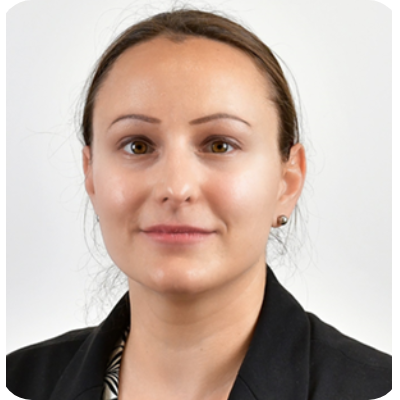
“Implementing inclusive development programs for persons with disabilities in low- and middle-income countries faces significant challenges. Limited resources and funding often hinder the provision of necessary accommodations and support services Inadequate infrastructure, including inaccessible buildings and transportation systems, restricts participation in various aspects of society Stigma and discrimination remain prevalent, leading to social exclusion and limited opportunities. Additionally, a lack of accurate data on disability prevalence and needs hampers effective policy-making and program design. To address these challenges, a multi-pronged approach is necessary. Increasing awareness and education about disability rights can help combat stigma. Adopting universal design principles in infrastructure development ensures accessibility for all. Strengthening data collection and analysis enables evidence-based decision-making. Engaging persons with disabilities in policy-making and program implementation ensures their voices are heard and needs are met. Finally, fostering partnerships between governments, civil society organizations, and international agencies can leverage resources and expertise for sustainable progress.”
DevelopmentAid: What are the most significant gaps in inclusion for persons with disabilities and how can international aid programs address these?

“In 2024, various barriers, including attitudinal, physical, informational, institutional, and policy-related ones, persist across multiple sectors.
- In healthcare, persons with disabilities continue to face limited access to essential treatments and services, with systems often lacking affordable, accessible care, and rehabilitation.
- In education, many children with disabilities remain excluded due to insufficient inclusive teaching practices, a lack of individualized support, and inaccessible environments.
- In employment, critical gaps include limited access to skills development, vocational training, and workplace accommodations, along with discriminatory practices. Persons with disabilities are particularly vulnerable in crises and protracted situations.
A multisectoral social protection approach is missing, especially in low- and middle-income countries, where stronger links between sectors are needed to address these barriers. Development efforts must prioritize equitable access across these sectors to ensure no one is left behind.”

“In 2024, the main gaps in inclusion concern:
- Education: Despite progress, many children with disabilities still lack access to quality education. The school enrolment rate for children with disabilities remains lower than that of other children.
- Health: Access to specialized health services and technical aids remains limited, particularly in rural areas.
- Employment: The unemployment rate for persons with disabilities remains high, with limited opportunities in the formal sector.
To bridge these gaps, international development efforts could:
- Support teacher training in inclusive education
- Help develop specialized health services in underserved areas
- Promote vocational training and entrepreneurship programs for persons with disabilities
- Support the effective implementation of legislation on inclusion and the promotion of rights for persons with disabilities.”

“From my perspective, the most significant challenges in healthcare are:
- Physical inaccessibility: Healthcare facilities are often not equipped to accommodate persons with disabilities, from having challenging physical access to lacking medical equipment that can cater to the needs of those with a disability.
- Discrimination and stigma: People with disabilities often face negative attitudes or discrimination on the part of healthcare providers, which can reduce the quality of care and make it hard to obtain essential services.
- Lack of specialized services and personnel: Tailored healthcare services, rehabilitation, mental health support, and assistive devices are not always available. These are critical for children, who cannot achieve their maximum possible functionality if treatment and rehabilitation do not start early enough.
- Poor health data: Limited collection of disaggregated health data on disability constrains the ability of providers and policymakers to design responsive health policies.
International development efforts can better address these gaps by fostering joint efforts at the regional level among countries with similar characteristics to build solutions and strengthen partnerships with the private sector across the region. In the same vein, public-private partnerships could increase resources for inclusive development around disability, especially in poor countries, to ensure that people with disabilities can access essential services. International development efforts should also support the integration of disability inclusion in national health plans and the training of health workers to better serve people with disabilities.”

“Gaps remain significant across education, healthcare, and employment. Barriers to education can limit a child’s future opportunities, while inaccessible healthcare has life-or-death implications. Employment is another critical gap; stigma, lack of skills training, and insufficient support also hinder many from finding decent work, especially those with albinism, severe disabilities, or psychosocial and intellectual impairments. Compounding factors like conflict, and discrimination based on gender, ethnicity, or economic status further exacerbate these issues. Development efforts prioritizing access and inclusivity across these sectors can open pathways to sustainable change, benefiting communities.”

“In 2024, significant inclusion gaps for persons with disabilities persist in key sectors. In education, despite progress in laws on equal access, many children with disabilities still face barriers to quality education. Healthcare remains a critical area of concern, with insufficient access to services for persons with disabilities. In employment, the gap between persons with and without disabilities is substantial, requiring at least a 2 % point increase per year to close by 2030.
To address these gaps, international development efforts should focus on:
- Implementing inclusive policies and legislation across all sectors, especially countries whom directly exclude persons with disabilities a wide range of political, social and economic rights (e.g. citizenship, right to live, right to work, and conditional welfare access etc.) that are laid out in the Convention on the Rights of Persons with Disabilities (CPRD).
- Improving accessibility in physical infrastructure and digital technologies.
- Combating stigma, prejudice and ableism through awareness or “Inclusion” campaigns.
- Engaging persons with disabilities or “self-advocates” in policy-making and program design.
- Strengthening data collection and analysis to inform evidence-based interventions.
- Promoting universal design principles in all development initiatives.
- Promoting CPRD compliance by nation states and strengthening human rights mechanisms.
- Fostering partnerships between governments, civil society, and international agencies to leverage resources and expertise.”
See also: The rise of noncommunicable diseases: causes, consequences, and solutions | Experts’ Opinions
The international development job market has made significant strides in becoming more inclusive, but challenges remain. However, the extent of inclusivity can vary across organizations and regions. To find jobs related to inclusion or for people with certain disabilities, having access to a large pool of open positions is key. With DevelopmentAid’s Individual Professional Membership, members can navigate through over 5,500 openings in the international development sector. Moreover, they can take short- or long-term consultancies by accessing open tenders or grants for individuals. They can even check salary trends and gain more exposure for their profile. All these options are just one click away.

